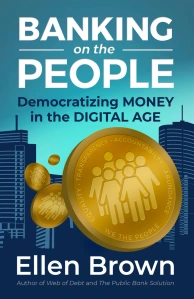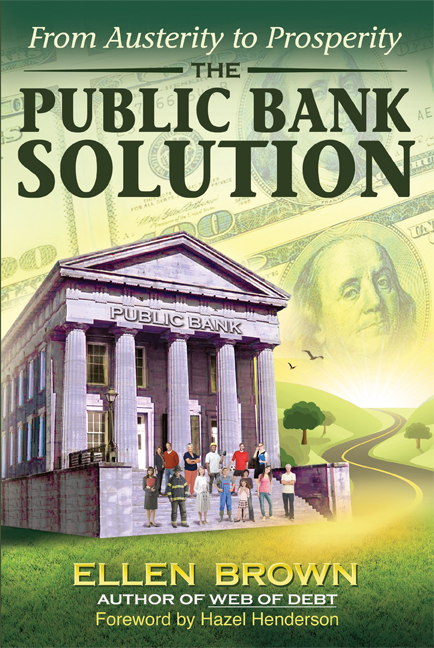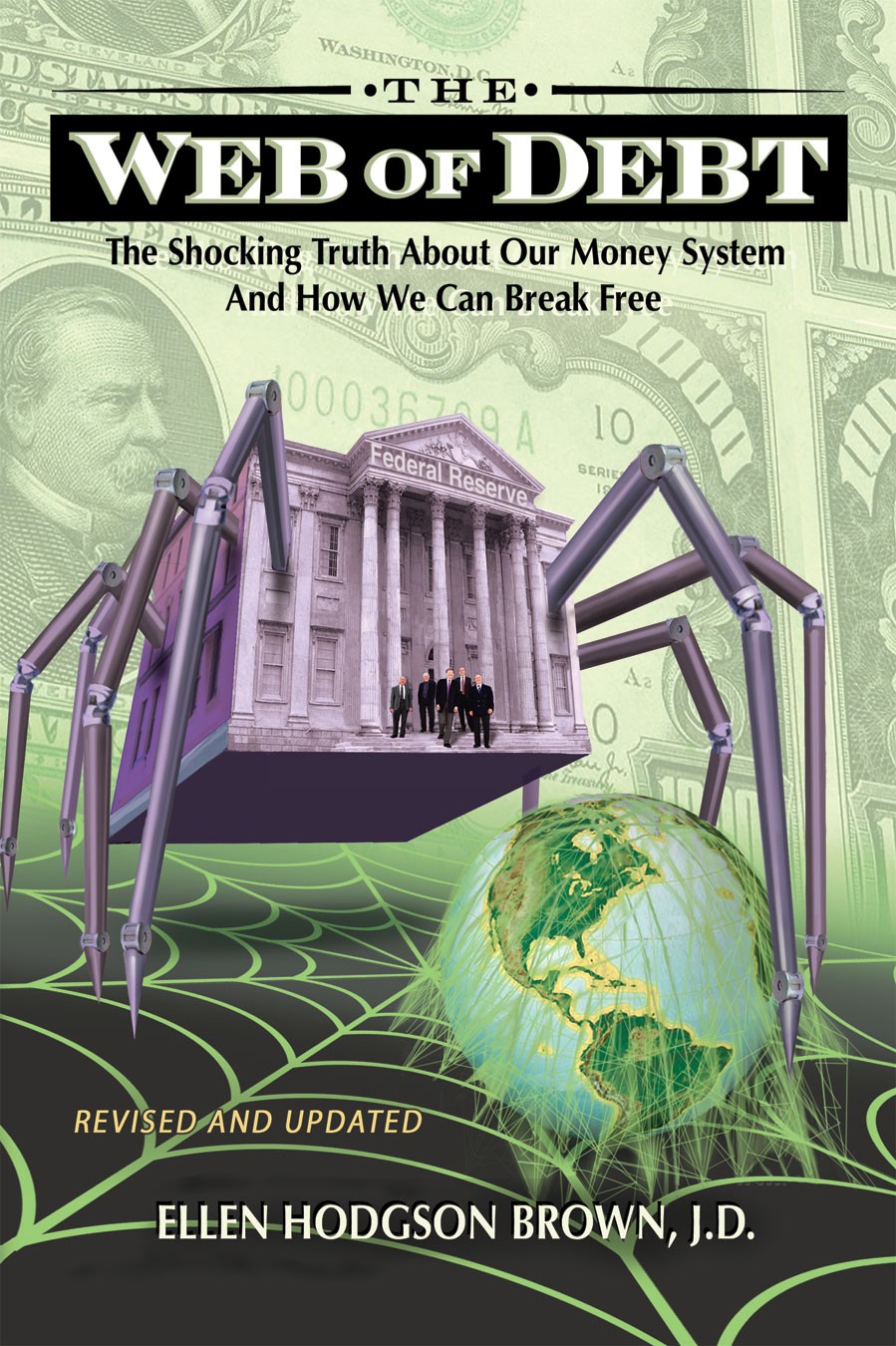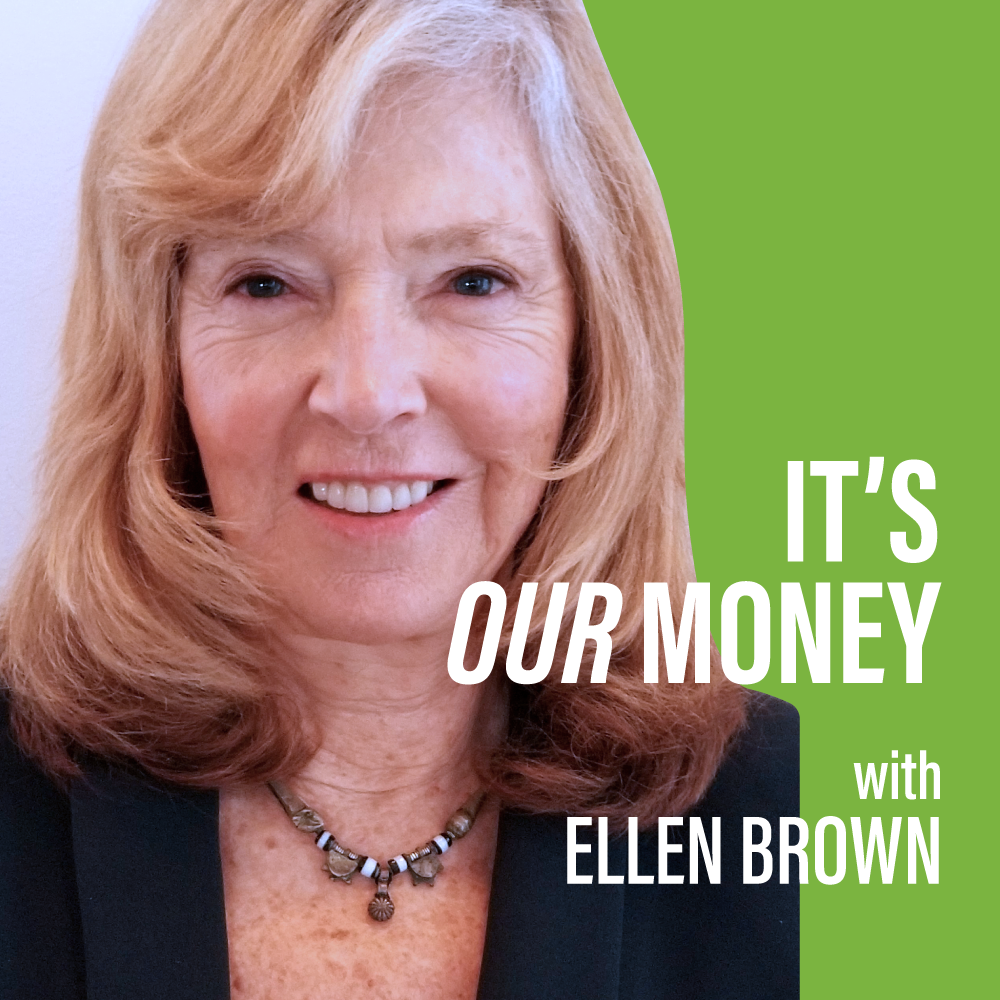Miners used to keep canaries in coal mines as an early warning device. If the air was so bad that it killed the canary, the miners would soon be next. Japan may be the canary for the out-of-control deficit spending policies now being pursued in the United States and the United Kingdom
Read more here –
http://www.webofdebt.com/articles/lesson_japanese.php
Filed under: Ellen Brown Articles/Commentary |






Thanks Ellen. A great article.
This seems like a simple solution so why is this not being done. Is it just ignorance
It has been raised in the House of Lords http://www.prosperityuk.com/prosperity/articles/earl.html in the past
And debt now is getting out of hand
Although isn’t this solution against European law.
hi ellen,
since forclosures cancel mortgage debt without payment and then the bank sells the property usually with a new mortgage, are forclosures inflationary?
Interesting question! They are, but I would say they’re inflationary in a good way right now, since we’re in a deflationary crisis. Money from defaulted loans is the only debt-free, interest-free, “permanent” money in the system besides coins. All of the rest is owed back with interest. The money out there from defaulted loans explains the difference between the federal debt and the M3 money supply. Without looking it up, I think right now it’s about $12 trillion federal debt and $16 trillion M3. Anyway M3 always outpaces the federal debt. The federal debt, too, never gets paid back — it just rolls over from year to year — but interest keeps accruing on it.
Ellen,
Doesn’t the difference between M3 and the Federal Debt also include outstanding private and commercial debts that are not in default, but haven’t been paid back yet?
Paul.
Yes, good point. I think that’s why M3 is always higher than the federal debt. The government is the only borrower that never has to pay its loans back, and its debt is therefore the chief source of “permanent” money in a debt-based money supply. But there are also, as you say, the new loans taken out that haven’t been paid off yet, plus the loans that defaulted and will never get paid off. Best, Ellen
Hi everyone,
This artical is really fine and I agree with most of it. But, when we talk about money supply, I must raise a question. How M3 aggregate can be treated as liquid assets, just because those assets are traded on market. That same can be stated for any commodity. What word `liquid` means is a universally accepted medium of exchange, i.e. real money, accepted by everybody and in every occasion.
With goverment bonds, real estate, time deposits, etc… that is not the case. You can`t buy goods in a grocery stores, tickets for theaters, pay taxes or repair your car by using goverment bonds or real estate. There is a good reason for that – those are not money. Simple as that. Time-deposits are not even medium of exchange. They are not involved in any kind of payments. So, there is no basis to include them in money supply.
People should be very reserved and careful when they use such terms and phrasis, because private banksters use them like a shield or smoke screen to confuse many. Monetary aggregates are classic example and shouldn`t be taken for granted. I believe that only M1 makes nation`s money supply for reasons I stated earlier.
Great article!
This could have been two articles in that you cover so much ground – and as a bonus – you offer a well reasoned solution.
I’m not sure that Ambrose Evans-Pritchard was saying that money should be created by the government and issued debt free – maybe I missed a subtle point?
I am having a difficult time visualizing the money stock components.
For example, I thought M3 was the broadest measure of money but according to the numbers in the article; our money stock has been hovering around $26-$28 trillion.
According to John Williams, Shadow Stats, M3 is currently around $15 trillion. So, does that mean that there is around $13 trillion in “shadow money” ($28 – $15 trillion)?
Another thing I am unsure of is exactly how “shadow money” is created. For example, is it accurate to say that banks create mortgages, then they bundle them and sell them to a third party.
If the “bundle” represents $100 billion in total principal, would I be right in saying that it would be sold for less? So, if it is sold for 50% of principal, it would be $50 billion.
If this is right so far, then what happens to the banks books? Do they eliminate a $100 billion liability? Would they realize a $50 billion profit?
If the bundle was bought for $50 billion but is it valued at $100 billion…do the “bundling” entities then use it as collateral to buy bonds and such…at $100 billion? If the bundle is sold to the private Federal Reserve; could a bank leverage it as “high powered” money?
Sorry for so many questions.
Please keep the articles coming….and your creative solutions!
Larry
Thank God for Web of Debt! This is the sanity we need.
But one point. Ellen Brown writes
“Price inflation results only when “demand” (money) exceeds “supply” (goods and services).”
This sounds like Milton Friedman creeping in. Surely “demand” is a function of income not money. More money in itself will not create shopping basket (goods and services) inflation as the speed of circulation of money is highly elastic. The monetarist relation between the quantity of money and price only works with asset prices. Why? Because the speed of money used for asset purchases is much slower than for goods and services and much less elastic. Indeed, the noughties asset boom resulted directly from money creation by the banks.
But what empirical evidence is there for a relation between quantity of money and goods and services inflation? And how could it work theoretically given the variability of the speed of money used for goods and services?
Excellent point, thanks! By “demand” I meant, as you say, the money actually competing for those particular products. I was just using the standard formula, but you’re right that I should be more clear on that. I think the justification for this whole wave of central bank privatizations and disapproval of governments issuing their own money or borrowing from their own central banks came from a mistaken economic theory, Friedman’s “inflation is always and everywhere a monetary phenomenon” (meaning prices go up as money goes up). Obviously the money supply is inflated when the quantity of money goes up, but what drives prices up are increased costs: either from interest (primarily), or labor (perhaps from strong labor union contracts that don’t change when conditions change), or materials (from shortages or manipulation), or taxes. Best, Ellen
Thanks, Ellen. I think to your list of factors determining the price of goods and services we have to add good old fashioned competition!
You say “the money supply is inflated when the quantity of money goes up”. I would be grateful if you could explain the difference between “money supply” and “quantity of money”. I always thought they were the same thing. Peter
Hi Ellen. Nice exchanging ideas with you on the BIS. Then I just discovered your blog. Great. I think deflation gives people who are working a raise. Their dollars are worth more. So, why is deflation bad and inflation good when inflation robs the value of the dollar?
Seems like deflation is worse when debt is greater. So you are right to say that we need to stop this madness of spending, or at least put the money into the real economy. It may be too late for that since the banks got most of the capital by thieving Geithner robbing the treasury as Paulson did before him.
One more issue I would like you to research. Kanjorski said that 500 billion was taken out of money markets as the crisis hit Sept 16,2008. However, I believe only 104 billion was taken out. The next day orders existed, with a few very large orders, for 500 billion to be taken out. This threat caused the government to blink and fund the 104 billion with a billion to spare and TARP was set up as well as other sweet deals for the banks.
What I would like to have researched is the possibility that some of these folks who wanted to take the 500 billion out were the elite folks who were going to lose their shirts because of the freezing of the commercial paper market. I can’t prove that and don’t know if it is proveable.
If that is the case, these withdrawal threats amounted to an extortion. Again, I can’t prove it and I am not making the accusation. I just want to find out.
Interesting point. Do you have a source for the $104 billion? I found it a hard issue to research. Thanks, Ellen
Yes here is a link: http://www.portfolio.com/views/blogs/market-movers/2009/02/11/kanjorski-and-the-money-market-funds-the-facts/
There are other links here at my hubpage: http://hubpages.com/hub/Silent-Run-on-Banks